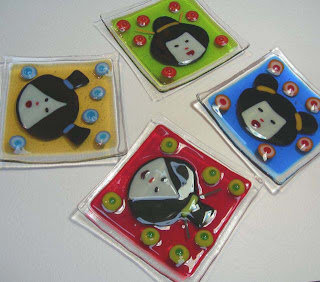
Unlike most "normal" women I hate shopping - for anything. Wandering around shops, browsing for clothes, presents, food drives me mad because I consider it a complete waste of time - I could be at home painting, drawing or fusing! So the internet is perfect for me as I can order all my books, glass, gifts and fusing materials on-line.
Here's my latest glass purchase from http://warmglass.co.uk It's all Bullseye including transparent colours, opal black, white, vanilla, some dichroic coated black and a whole packet of stringers. Yum! I also bought some "staples" like kiln wash, Glastac and silver plate bails but I won't bore you with those. Now, out of my way - I'm off to create with these glass goodies.









